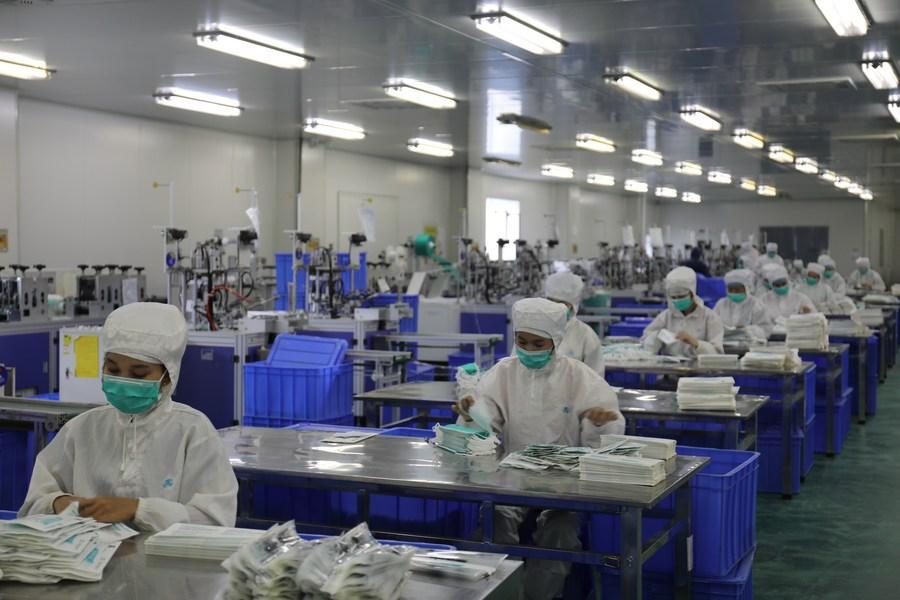


Xinhua | November 23, 2023

Aerial photo taken on July 19, 2022 shows the entrance of the Sihanoukville Special Economic Zone (SSEZ) in Preah Sihanouk province, Cambodia.(SSEZ/Handout via Xinhua)
Located in southwest Cambodia, the Sihanoukville Special Economic Zone (SSEZ), a joint venture between Chinese and Cambodian companies, has not only positively impacted on local people's lives, but also significantly contributed to the kingdom's economic growth.
A landmark project under China's Belt and Road Initiative (BRI), the 11-sq-km special economic zone currently houses 175 factories from China, Europe, the United States, Southeast Asia and other regions, generating some 30,000 local jobs.
Em Sreyda, a 24-year-old employee at the General Tire Technology (Cambodia) factory in the SSEZ, said working at the factory has allowed her to have both a good income and specific skills.
"I like my job because there is no working pressure, and when we don't know how to do things, they (Chinese colleagues) always teach us," she told Xinhua on Tuesday.
"Here, we can improve our Chinese language proficiency, and the wages are also decent. I earn 600 to 700 U.S. dollars per month," she added.

Workers make face masks at a factory in the Sihanoukville Special Economic Zone (SSEZ) in Preah Sihanouk province, Cambodia on July 19, 2022. (SSEZ/Handout via Xinhua)
Sreyda said the SSEZ is very important as it serves as a stable source of jobs for local residents.
Say Udom, 22, a warehouse supervisor at the Jiangxi 3L Medical Products factory there, said his basic wage is 500 U.S. dollars per month, and it will be higher, with his overtime pay and bonus.
"Working at the factory, I have a decent income, so I can support my family and save some money to buy things I like, and recently, I just bought a new motorcycle," he said.
"With this job, my living conditions have improved much because the factory has offered us accommodation and food, and so I can reduce a lot of expenses," he added.
Udom said the SSEZ is crucial to local workers as its factories have not only provided jobs, but also food and accommodation.
"I would like to thank Chinese investors for investing in Cambodia, particularly in this special economic zone, because their investments have greatly helped improve our living conditions," he said.
Yeak Chhit, a quality control team leader at the Jiangxi 3L Medical Products factory, said the job enables him to earn as much as over 700 U.S. dollars a month.
"The job has much improved my living conditions," the 28-year-old told Xinhua. "Now I have money to buy any items I need."
Situated some 20 kilometers northeast of the international deep-water Sihanoukville Autonomous Port, the SSEZ is the biggest industrial zone in size and occupancy in Cambodia.
Ky Kheng, 38, a beverage and grocery seller inside the zone, said the SSEZ has transformed the former fishing village into a bustling town full of good infrastructure, gas stations, phone shops, barbershops, markets and restaurants.
"I'm happy with the zone's development because sales here are much better than in other places, so my income is also high," he said. "This special economic zone has a lot of workers and factories, and my sales are pretty good."
Kheng said the SSEZ has brought better lives to both local workers and residents living around the zone.
Jiangxi 3L Medical Products factory's manager Chen Juan said the BRI has enabled economic benefits, personnel trainings, and good reputation for enterprises in the zone.
"The BRI has significantly contributed to boosting our company's brand benefits. In the three aspects of economic benefits, personnel training, and reputation, our company has genuinely gained dividends from the Initiative," she told Xinhua.
The SSEZ's president Chen Jiangang said the value of imports and exports passing through the zone rose to 2.7 billion U.S. dollars in the first 10 months of 2023, up 33 percent year-on-year.
"The value of imports and exports through the SSEZ accounts for 7.13 percent of Cambodia's total trade turnover," he told Xinhua. "This achievement is quite amazing. It can be said that the investment of our enterprises in Cambodia has brought vitality to this once barren land, and it also provides a sense of achievement to the local people."
Chen said that currently, on average a Cambodian worker employed in the industrial park can earn more than 300 U.S. dollars per month.
Founded in 2008, the SSEZ is expected to accommodate up to 300 enterprises in coming years, generating up to 100,000 jobs.
